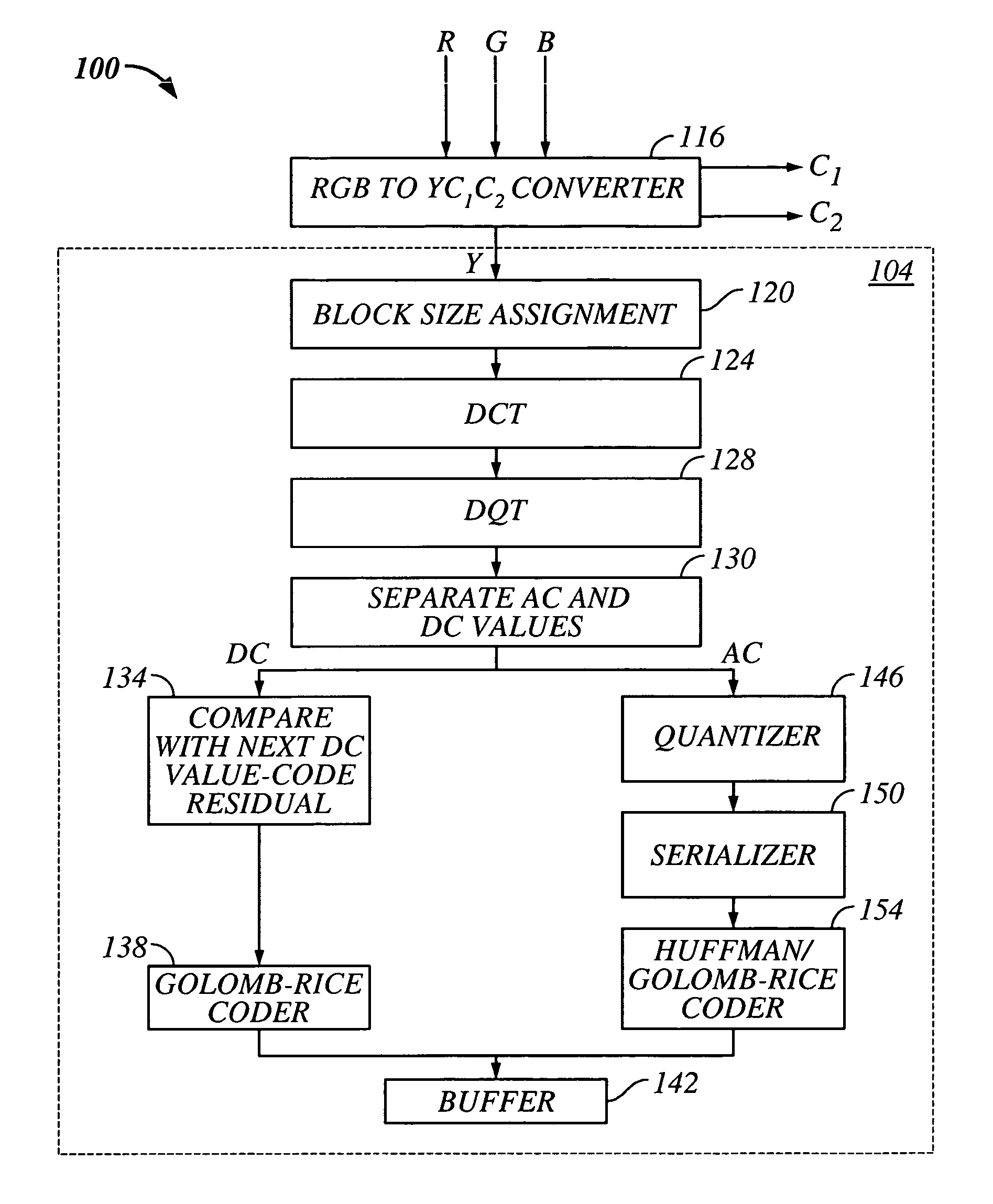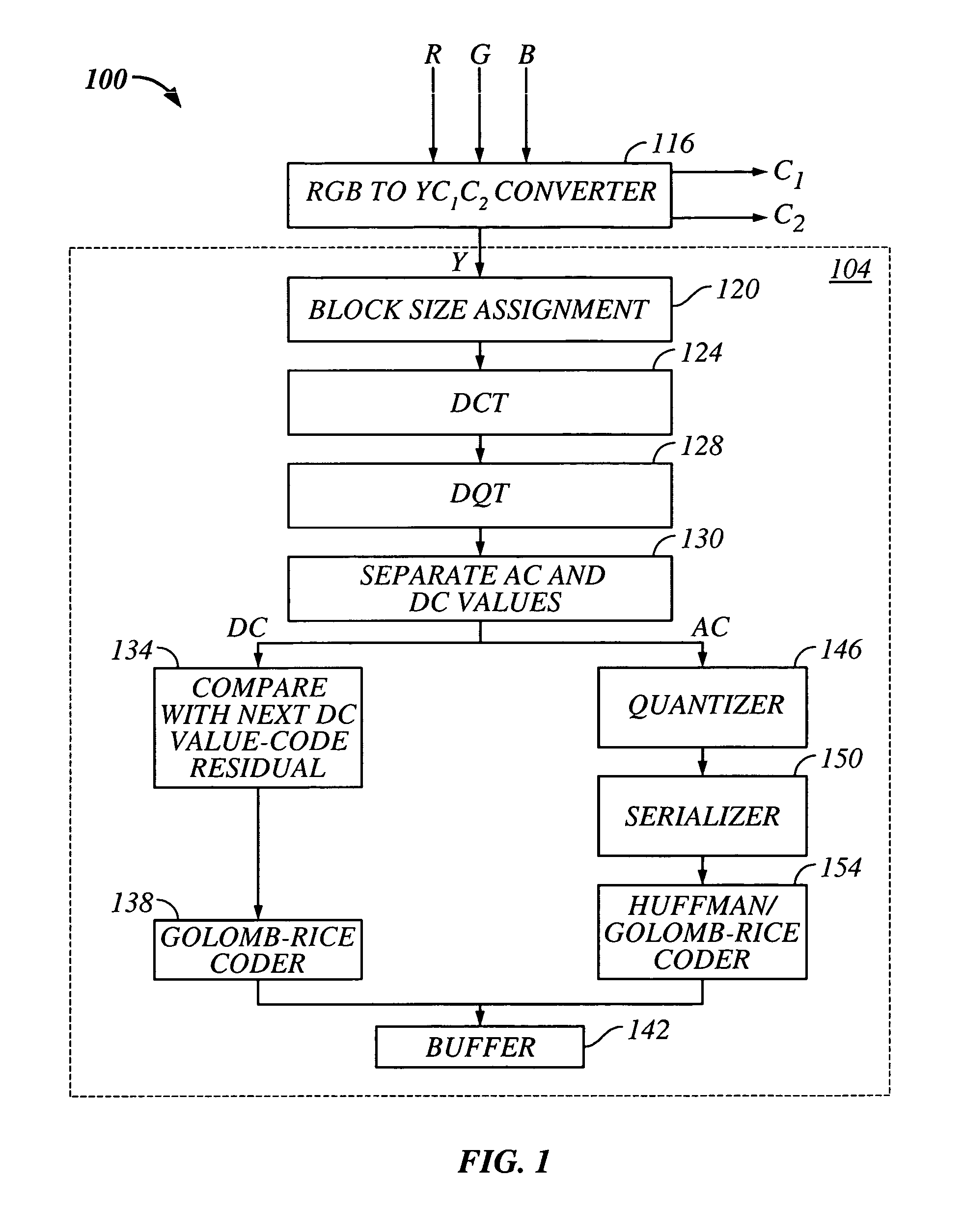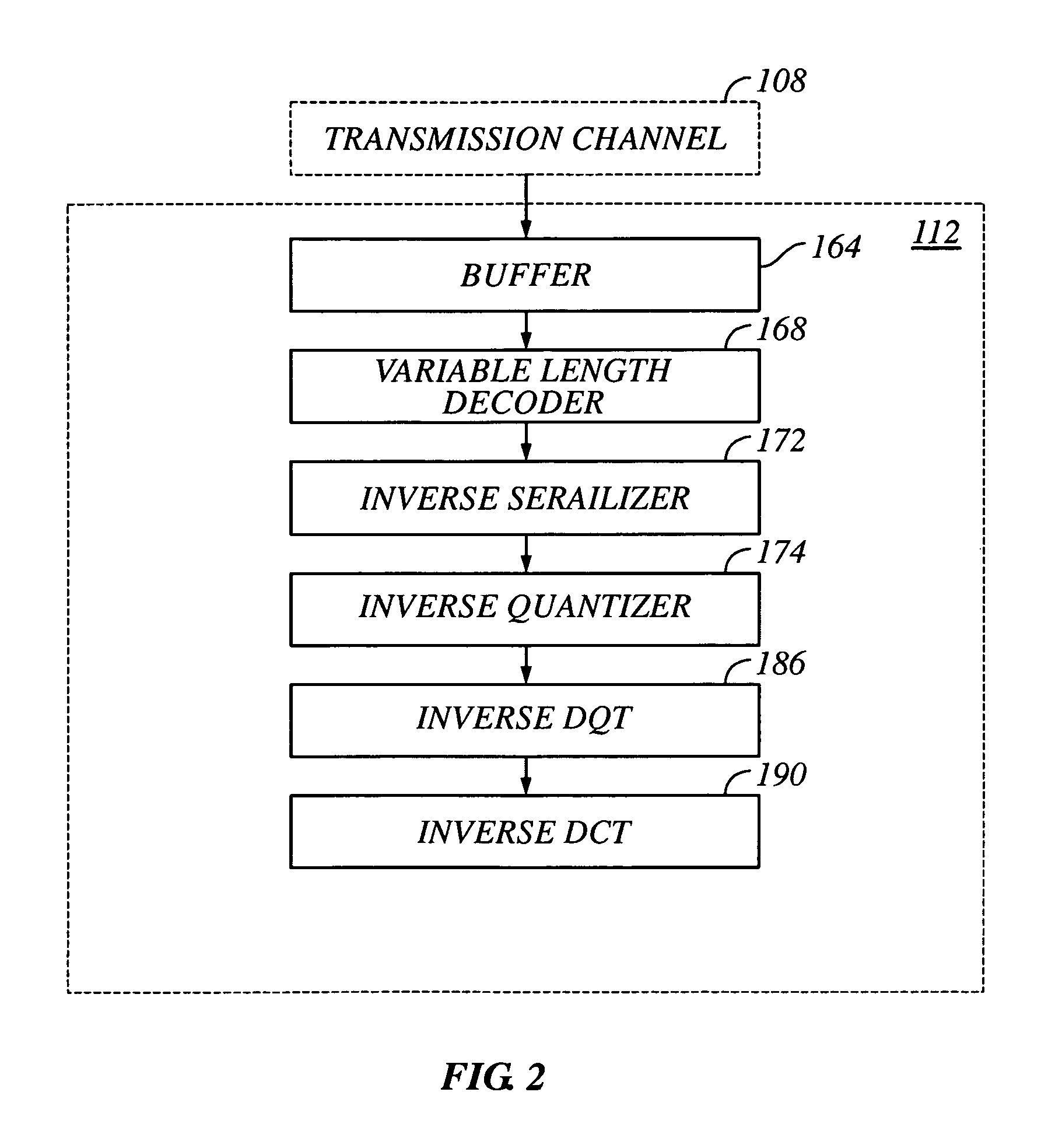Apparatus and method for encoding digital image data in a lossless manner
a lossless and digital image technology, applied in the field of image processing and compression, can solve the problems of affecting the quality of video signals, and the lossy method involves irrecoverable loss of some information, so as to achieve the effect of efficient lossless compression
- Summary
- Abstract
- Description
- Claims
- Application Information
AI Technical Summary
Benefits of technology
Problems solved by technology
Method used
Image
Examples
Embodiment Construction
[0045]In order to facilitate digital transmission of digital signals and enjoy the corresponding benefits, it is generally necessary to employ some form of signal compression. While achieving high compression in a resulting image, it is also important that high quality of the image be maintained. Furthermore, computational efficiency is desired for compact hardware implementation, which is important in many applications.
[0046]Before one embodiment of the invention is explained in detail, it is to be understood that the invention is not limited in its application to the details of the construction and the arrangement of the components set forth in the following description or illustrated in the drawings. The invention is capable of other embodiments and are carried out in various ways. Also, it is understood that the phraseology and terminology used herein is for purpose of description and should not be regarded as limiting.
[0047]Image compression employed in an aspect of an embodime...
PUM
 Login to View More
Login to View More Abstract
Description
Claims
Application Information
 Login to View More
Login to View More - R&D
- Intellectual Property
- Life Sciences
- Materials
- Tech Scout
- Unparalleled Data Quality
- Higher Quality Content
- 60% Fewer Hallucinations
Browse by: Latest US Patents, China's latest patents, Technical Efficacy Thesaurus, Application Domain, Technology Topic, Popular Technical Reports.
© 2025 PatSnap. All rights reserved.Legal|Privacy policy|Modern Slavery Act Transparency Statement|Sitemap|About US| Contact US: help@patsnap.com



